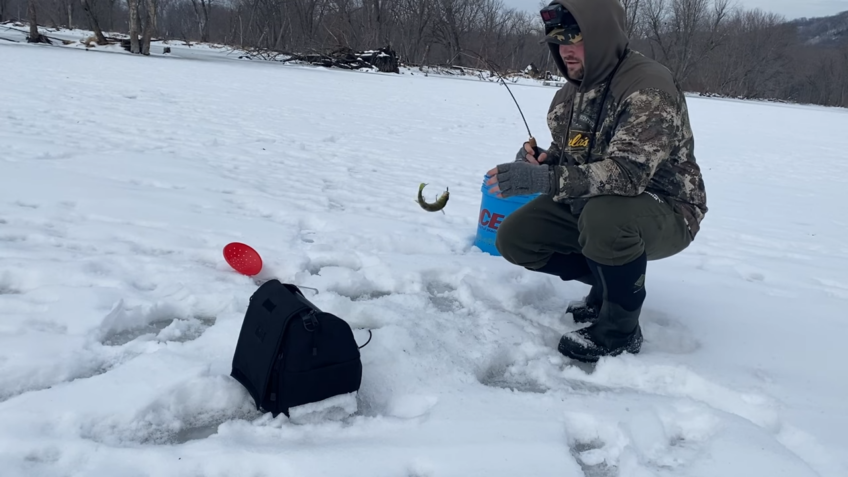Mississippi River is not only a popular spot for boating and other water-based activities but also an excellent destination for ice fishing enthusiasts. With its abundance of fish species and a variety of fishing locations, the Mississippi River offers ample opportunities for anglers to catch fish during the winter months.
In this guide, we’ll provide a comprehensive overview of Mississippi River ice fishing, including the best locations, techniques, and gear to use. Whether you’re a seasoned angler or a beginner, this guide will help you make the most of your ice fishing experience on the Mississippi River.
Gear and Equipment
Ice Fishing on the Mississippi River requires special gear and equipment to ensure a safe and successful fishing experience. Essential items for ice fishing include warm clothing, ice picks, insulated boots, an auger, and a shanty.
In this section, we’ll talk about each of these items in more detail and provide some helpful tips for selecting the right gear for your ice fishing trip.
Ice fishing rods
Ice fishing rods are designed specifically for fishing in cold environments. The rods generally have handles made from foam or cork that fit into your hands in a very comfortable manner. Many ice fishing rods will have shorter handles to help keep you close to the hole, while others might feature extendable handles that can be placed on your lap or the ground beside you when not in use.
The lengths of ice fishing rods range anywhere from 20-37 inches and are ideal for targeting bluegill, crappie, and perch when ice fishing in the Mississippi River. The regular-size rod is great for jigging small baits such as live worms and soaked seed baits while larger models with more backbone are perfect for trolling deep crankbaits and swimbaits through deeper water. You’ll also want to make sure that you equip yourself with a good quality reel, line, and tackle box as these will all be essential when it comes time to hit the waters of the Mississippi River!
Ice fishing reels
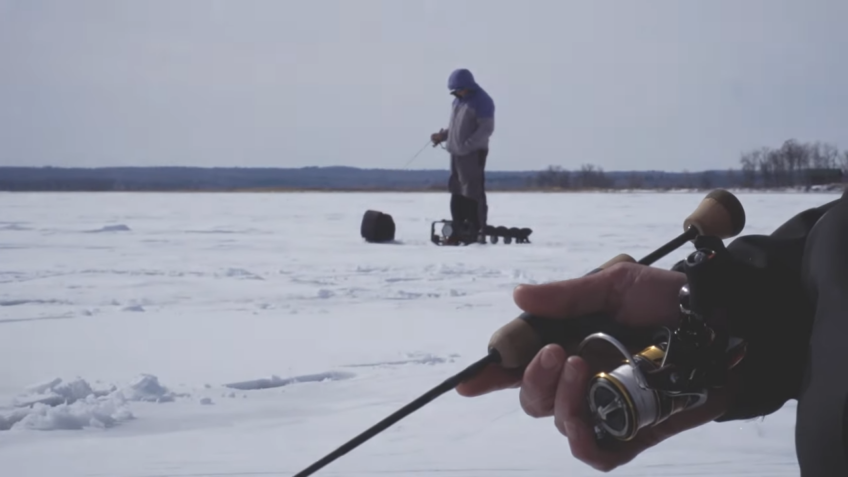
Ice fishing reels are specially designed for cold weather conditions and are designed to accept monofilament lines that are thicker than those used in conventional open-water reels. Where conventional reels use a bail or line roller to pick up the line, ice fishing reels use a spool fork and trigger pin design. The spool fork holds the loose end of the line while the trigger pin arms were thrown back against a spring with each rotation of the handle.
Like all modern reels, ice fishing models come in both spinning and baitcasting designs. In general, spinning reel designs are preferred for their relative simplicity, but bait casters can have an advantage by allowing more line control during casting or fighting fish. Ice rod angels range from ultra-light to heavier designs meant for larger fish like pike and walleye.
Ice fishing line
A quality fishing line is one of the most important pieces of equipment needed for a successful fishing trip.
First, determine what type of line you need. For ice fishing, anglers typically use either monofilament or braided line. Monofilament is affordable and supple, requiring less effort to cast than braided line, making it preferred for smaller species such as walleye or perch. Braided lines are made from four or more fibers woven together to form a strand that has greater tensile strength than monofilament but less suppleness. This type of line is effective in catching bigger catches such as northern pike and lake trout.
Additionally, pay attention to the pound-test (or poundage) rating on your chosen line; this will determine its breaking strength – higher numbers indicate stronger lines that can hold larger catches without breaking. For winter fishing on the Mississippi river with either field or jigging techniques, a good choice would be a 6-15 lb test line depending on the type of fish you are targeting.
Ice fishing lures
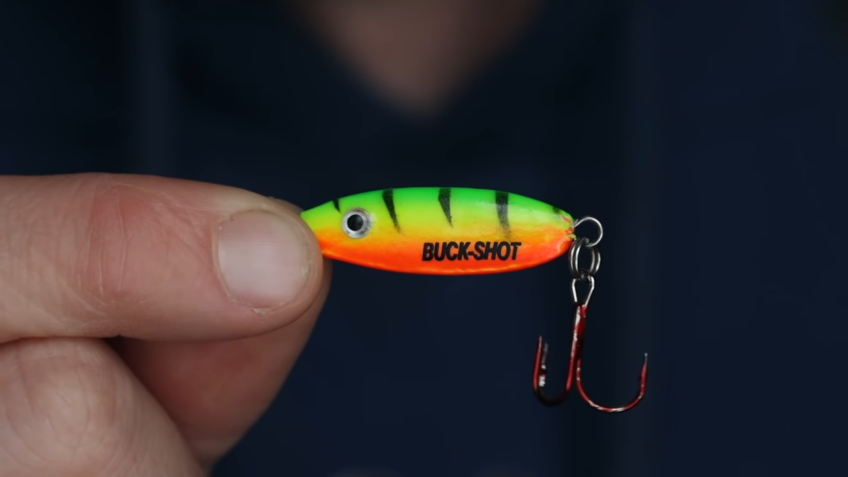
The goal is to make a lure that can be seen and heard by the fish underneath and triggers them to bite. Depending on the type of fish, different lures can either be fished below or allowed to flutter as they sink.
The two most popular types of ice fishing lures are jigs and spoons, both of which come in a variety of sizes, colors, and styles. Jigs are designed to imitate tiny critters and worms that may be found at the bottom of the lake or river and usually come with a small piece of bait attached to it which is meant to tantalize even more than by just looks alone.
Spoons tend to mimic small baitfish with larger sizes usually being used for gamefish such as trout, bass, or walleye in deeper waters. Most fishermen target their desired species with jigs during wintertime because they have proven over time to be one of the more successful ice-fishing methods.
Various other gear may also be used in ice fishing depending on how advanced you’d like your experience to be. This includes tip-ups, sonar devices, augers, sleds, or even supplies such as shelters or huts on the ice! You’ll want certain gear based on whether you enjoy sitting stationary in one spot or if you’d rather walk around hunting fish in multiple areas as well as what conditions arise while out there during your adventures such as cold temperatures and snowfall!
Ice fishing bait
Ice fishing bait varies greatly by region and species. Ice fishing in the Mississippi River presents its own unique opportunities to land quality catches. Some of the most successful bait varieties used in this region include night crawlers, wax worms, jigs, mite larvae, and minnows. Bait should always be carefully inspected before use to ensure optimal freshness and effectiveness on the river’s inhabitants.
Nightcrawlers have long been considered one of the most effective ice-fishing baits in this region. They are available from tackle shops as well as bait stores and can be stored for later use in the refrigerator to preserve their freshness. Wax worms are also very popular in this area due to their small size and ability to attract smaller fish such as crappie or bluegill.
Jigs can typically be bought in packs at most tackle shops and come with colorful options for different water depths or species preferences that can be used to catch perch, bass, or walleye. Mite larvae also work well on larger species such as pike or musky due to its size and durability when hooked into a fish’s mouth through a piece of cut bait like a shiner minnow or sucker chunk added onto it.
Lastly, most small sized fry eating panfish like bluegill or yellow perch are attracted by shiners — small silver-colored minnows that can also be found at bait shops — as they remain mobile when on a hook tip-down specific presentations over rock piles near weed beds that let them hang at an angle.
Ice fishing shelters
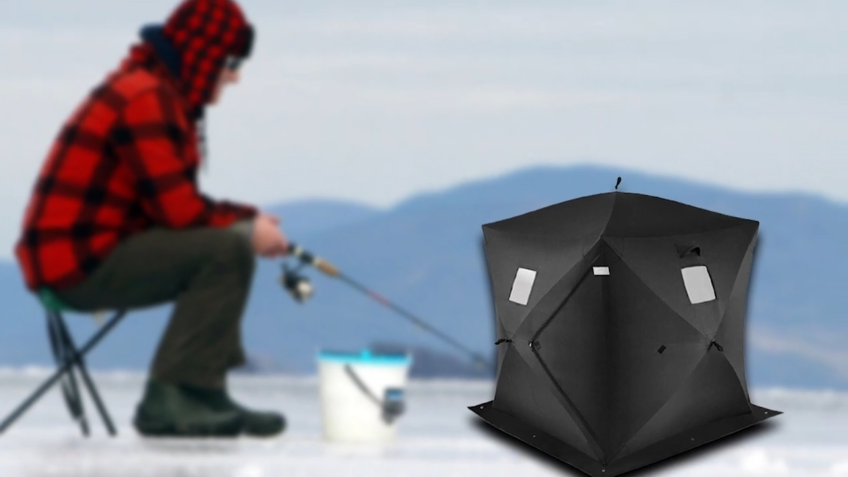
They can provide a great deal of convenience and comfort, allowing you to spend many productive hours on frozen bodies of water. When you are deciding on the best shelter for your ice fishing needs, there are several important points to consider.
Starting with the interior, you need to know how much space will be necessary for your preferred style of fishing. If multiple anglers are going to be in the shelter together, make sure there is enough room for everyone – including all the necessary gear! There should also be plenty of pockets and straps so that you can easily find and store all of your supplies and equipment.
The exterior and insulation of an ice fishing shelter can also have a major impact on how productive your trips will be. Look for fabric laminates that stand up to abrasions from sharp objects as well as rips from claws and fins. Fiberglass poles should also provide adequate support during windy conditions on open lakes or rivers. Good insulation between layers will keep out the cold while still providing a snug fit when rolled up in storage mode or dragged behind an ATV or snowmobile.
Finally, decide what type of shelter will work best for your needs – hub-style with multiple panels that protrude outward; flip-over models that quickly set up on small chunks of ice; thermal units designed specifically with insulation in mind; or portable shacks that provide temporary housing over big waters periodically throughout winter months. Different models will provide different levels of warmth along with varying amounts of storage options – make sure you consider these factors when selecting the perfect ice fishing shelter for your next outing!
Safety
This type of fishing is an enjoyable and productive way to enjoy the Mississippi River, but it can be dangerous and should not be taken lightly. It is important to take precautions to ensure the safety of yourself and your equipment while ice fishing on the Mississippi River.
This section will provide safety tips and considerations to follow when planning an ice fishing trip.
Dress for the weather
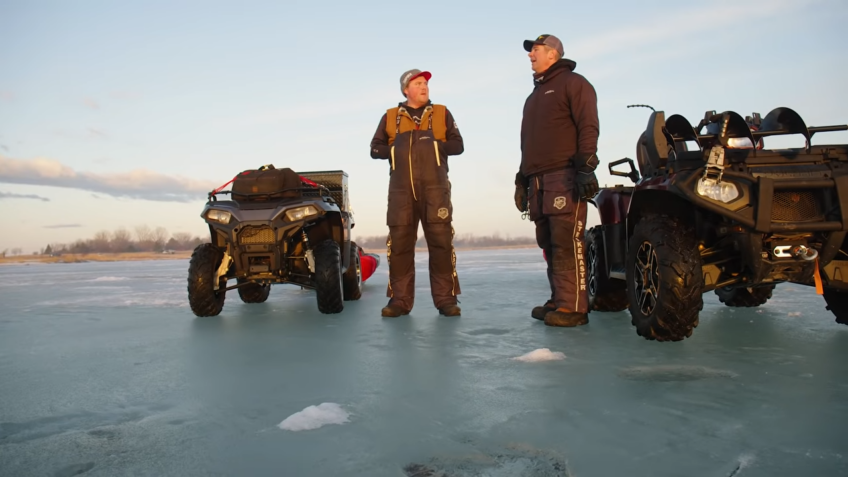
When ice fishing on the Mississippi River, proper attire is essential to keeping yourself safe and warm. Dressing in extremely cold weather conditions may seem obvious, but some people are unaware of the potential danger the environment can have on extremities. Staying warm means protecting your skin from specific dangers like windburn and frostbite.
It is important to dress in multiple layers so you can easily adjust how much clothing you are wearing depending on the temperature outside. This could include an undershirt, a fleece-lined jacket, multiple pairs of thermal underwear, a heavy coat, and a thick woolen hat. Additionally, be sure to wear insulated waterproof boots that provide traction on slippery surfaces. Accessories like neck gaiters, face masks, and thick insulated gloves should not be overlooked as they can help protect your body even further when outdoors in the cold.
Wear a life jacket
One of the most important items you should wear for safety is a life jacket. A properly-fitted personal flotation device (PFD) is always recommended but can be especially critical when on ice. Specifically, consider wearing a Type II PFD, also referred to as a near-shore buoyant vest, which can help support your body without impeding mobility for winter sports such as ice fishing.
When wearing a life jacket during ice fishing, choose one that is comfortable enough to move in and that won’t inhibit your range of motion while you are reeling in your catch. For extra protection and visibility on the ice, look for light-colored PFDs with reflective patches or accents that will signal your presence to other fishermen and hunters. It’s also important to dress accordingly in cold weather apparel designed to keep you warm and dry while out on the ice—especially additional layers such as snow jackets and insulated bibbing or overalls.
Use caution when walking on ice
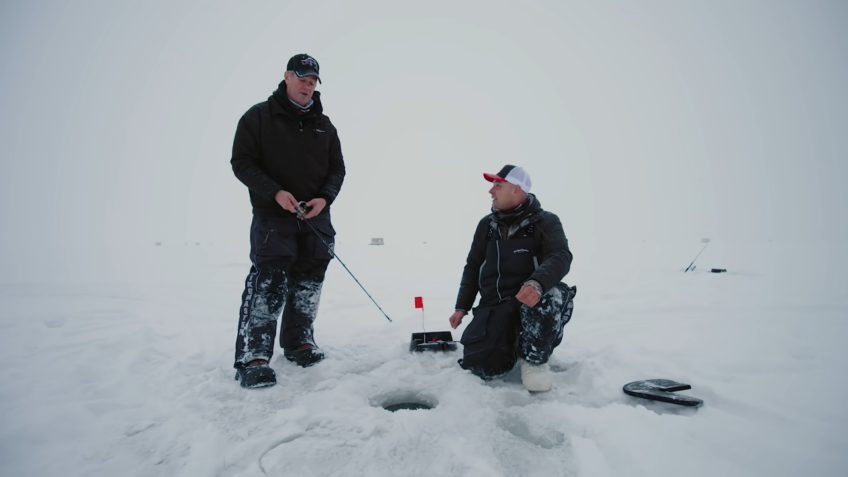
When venturing out onto any frozen body of water you should always take the necessary safety precautions. Before heading out, make sure you are all geared up correctly to prevent any potential disasters. Wearing a personal floatation device (PFD) can save your life if an emergency does arise. Additionally, wearing insulated boots provides better traction on the slippery ice and prevents cold, wet feet if an unexpected plunge into the river occurs.
When walking on ice, it is important to use caution and take preventive measures. Use spikes or cleats on your boots to prevent slipping or use poles while progressing slowly to disperse your weight and reduce the chance of falling through; however, be aware of the signs that indicate unsafe conditions. Before stepping onto any body of water you should check for weak areas by testing with a stick or auger – drilling into various areas is best practice when determining safe spots to walk onto and off of the river anytime during this type of fishing season.
The thickness should never be taken for granted; referring to recent local weather reports pertaining to air and water temperature will give anglers more detailed insight as to where safe fishing spots may lie beneath freshwater layers in Mississippi channels year-round.
Bring a buddy
Safety is paramount when ice fishing the Mississippi River! Conditions can create extreme situations, so be sure to bring a full set of safety gear with you. It’s also strongly recommended that you don’t do it alone and bring at least one more person with you — preferably someone experienced in safety procedures and using rescue gear.
Also consider bringing safety equipment such as an ice pick or throwing a rope to break the ice if an accident should happen, or an audible signaling device such as an air horn in case of emergency. You should also determine what type of communication devices are available on both land and water (cell phones, marine radios, etc.).
Species
The types of fish you are going to encounter when you start ice fishing in the Mississippi River include walleye, crappie, northern pike, and largemouth bass.
Northern pike
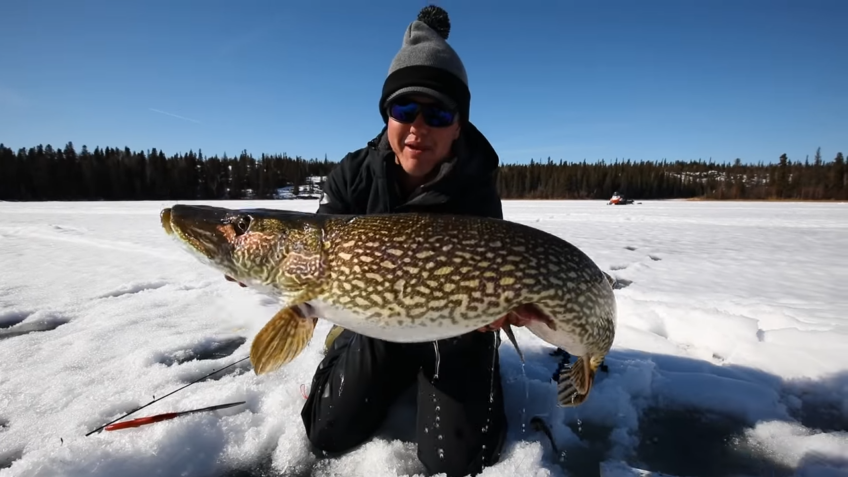
Northern pike (Esox lucius) is a type of predatory fish found widely throughout North America and Eurasia. In the United States, some of the most popular ice fishing spots for pike are in Minnesota and Wisconsin in the Great Lakes Region, as well as in Mississippi.
Northern pikes are large fish that feature long and slim bodies with yellow or greenish coloration and dark vertical bars on the flank and back areas. They have razor-sharp teeth, numerous gill rakers, protruding lower jaw teeth, small eyes set close to the snout’s front end, and hybridization capability with other related species. They can be up to 70 inches (1.8 m) long and weigh 55 pounds (25 kg).
Northern Pike feeds primarily on perch, shad, fish eggs, frogs, ducklings, insects, crayfish and mice. Juveniles feed mostly on invertebrates until they reach 8–9 inches (20-23 cm) size while adults primarily feed on fish when they get to 12–15 inches (30-38 cm).
These voracious predators usually linger near vegetation or within weeds that are anchored by a rocky bottom. Since northern pike will actively hunt for food during daylight hours anglers typically want to set their mobile shelters at spots that create casting shadows against sunlight above the water surface area – edges of weed beds with deep drop-offs are ideal for this purpose.
Walleye
Walleye (Sander vitreus) is an important species to anglers seeking a great-tasting fish. It has a long, slender body with a serrated spine on the dorsal fin and pointed pectoral fins. The typical color is medium brown with darker mottling and lighter splotches along the sides. Its large eyes and sharp teeth can help identify it amongst other fishes. Walleye range in size from ½-pound “shorts” to those exceeding 10 pounds caught in larger rivers.
Walleye fishing success depends greatly upon water temperature, particularly during spring when most of the spawning takes place. Most anglers find walleye in mid-depth depths near river channel edges, breaks in slopes of river bottom composing sand and gravel banks, as well as shoals near current breaks created by wing dams or logjams.
Fishing access on the Mississippi River is remarkable with islands creating numerous backwater areas full of feeding walleyes this time of year plus navigation locks making many sections upstream accessible for anglers at all times as long as they possess proper identification &/or permits required to enter lock chamber areas throughout the May/June & July periods up until August spawning season commences.
Right now night fishing from a boat at shallow riffles where the current has scoured sandbars & is crossing over into deeper water for larger walleyes works very well on most portions of the Mississippi with lures like jigging raps (making walking dog action) over sandy barges being fruitful for big walleyes here this time period through late June into early July!
Crappie
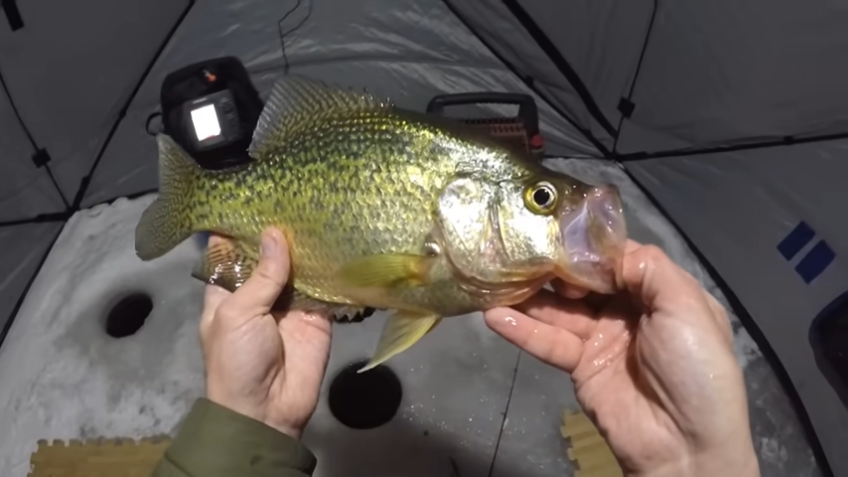
Crappies are a species of pan fish that are especially popular for ice fishing on the Mississippi River. There are two distinct species, black crappie, and white crappie. They both exhibit similar traits, including relatively slow swimming speeds, favorite sources of food such as minnows and insects, deeper range preference in summer, and shallow-water preference in winter — key habits to remember when planning your ice fishing outing.
Black crappies usually have six or seven dusky vertical black bands running from back to belly, while white crappie may have five or six (although it is not uncommon for them to have four or seven too). This is an easy way to tell the two species apart.
White and black crappies can both grow several pounds if given the opportunity. If you catch one weighing 8 lbs (3.6 kg) or more that’s considered a trophy fish! But neither racial groups get much larger than 10 lbs (4.5 kg). Crappies tend to inhabit deep water areas with aquatic vegetation during warmer months while they enter shallow waters during cold weather conditions. When planning your fishing trip be sure to keep these behavior patterns in mind!
Catfish
The Mississippi River is home to various species of catfish. Commonly found along the stretch of the river, some of the popular catfish varieties are:
-Flathead Catfish: Also known as Mississippi Catfish, these fish have a flat head and long pointed snouts with yellowish to brown colored bodies. They require fast-moving water with plenty of covers.
-Blue Catfish: The Blue Cat is most abundant in the Middle and Lower Mississippi River region. These are the largest, most sought-after catfish species in this area of the river, growing up to 100 pounds or more!
-Channel Catfish: These fish feature a speckled greenish-blue body with two dark horizontal stripes running from their head to their tail near their dorsal fin. Channel Cats are one of the easiest species for anglers to find and typically inhabit areas similar to Flatheads during spawning times.
All three species can be caught with similar fishing methods such as minnows or “cut bait” (pieces of fresh or frozen fish) under tip-up rigs or on bottom rigs in combination with circle hooks and jigs tipped with bait chunks such as shrimp, chicken livers, bluegills, etc.
Techniques
Ice fishing the Mississippi River is a fun and rewarding way to fill your ice chest with some fresh catches. There are a few techniques that you should be aware of in order to make the most out of your trip.
These techniques will help you maximize your chances of catching a big one, so read on and find out how to get started.
Jigging
Jigging is one of the most popular methods used for ice fishing in the Mississippi River. When it comes to jigging, presentation, and size are critical factors that can mean the difference between catching fish and having an uneventful day on the ice. To begin, select a jig that matches the size of the fish you’re targeting.
For example, when targeting panfish like crappie, bluegill, and perch, use smaller jigs such as 1/32-ounce tungsten or metal beads tipped with wax worms or minnows. Larger predators like walleye or pike require larger jigs such as 1/16-ounce metal blades or similar lures with nightcrawlers or clusters of small baitfish.
When you’ve chosen the right lure and bait combination, fish in active areas such as recent schools of baitfish or those spots where you’ve seen other anglers catching fish. Finding active spots takes time, so consider using a graph sonar system to determine what depths are most productive. Varying jigging techniques also helps draw strikes from weary fish; try vertical jigging a couple of feet off the bottom along with drop-and-lift motions while moving through an area casting out to where you think fish might be holding. You can also switch up your presentation by twitching your rod tip toward you on the horizontal plane and then jerking it away to create action on your lure — this motion sometimes triggers even more aggressive bites from predatory panfish and game species alike!
Drifting
Drifting is considered one of the most popular and effective ice-fishing techniques. It involves slowly moving a bobber along the bottom of the river, usually relying on current to set your line. You will need to be in a boat or rest your line on the ice shelf over a hole – whichever you choose, ensure that your weight and bobber are where you want them, as deep as necessary. When using this technique make sure to use lightweight jigs that can handle depth and movement while still being attractive enough for fish to bite.
When drifting through an area on the Mississippi River it is important to pay close attention not only to what sort of fish are hitting but also to the geography of the area. Make sure your jig follows along deep contours or ledges in order to pinpoint some active fish populations with this method.
Drifting for walleye is an excellent way to target big fish in deeper waters of larger rivers like the Mississippi River system – so don’t be afraid to try different speeds with varying weights until you’ve found success! When mixing up how far off the bottom you drift, coupled with a slow trolling speed, it’s possible for exploration as well as fishing here!
Tip-ups
The tip-up is a popular technique used by novice and experienced anglers alike when ice fishing on the Mississippi River. Tip-ups provide an easy-to-use system that alerts the angler when a fish has taken the bait. This allows the angler to tend to several lines simultaneously. Commonly used tip-ups are either wooden or plastic platform/flipper models, and these come with several handy features:
- A built-in rod holder keeps rods secure and ready for action.
• A flag that is tipped up or released when a fish takes the bait.
• An adjustable depth setting allows line-out (deep) placement of your bait until you set it.
• The base includes an adjustable height to shift the tip up from a hole in order to adjust for changing weather conditions.
• For convenience, a holder for your pliers so that you don’t have to constantly reach for them if needed.
In addition, many tip-ups offer pre-laced bait hangers as well as additional holders at which stakes can be placed in order to stabilize your lines. When placing your baits into the water, consider adding weights or jigging action in order to attract larger species such as pike, walleye, largemouth bass, and trout during their active periods throughout the day. The depth of your line should be adjusted accordingly as most bites will happen near the bottom during peak times with lighter species being attracted by suspending baits mid-water column.
Regulations
Mississippi River ice fishing is a popular winter activity, but it is important to know the regulations before heading out. Here is a guide that provides the regulations you should be aware of before fishing on the Mississippi River.
This section will cover state-specific fishing regulations, slot limits, bag limits, and other important regulations.
State regulations
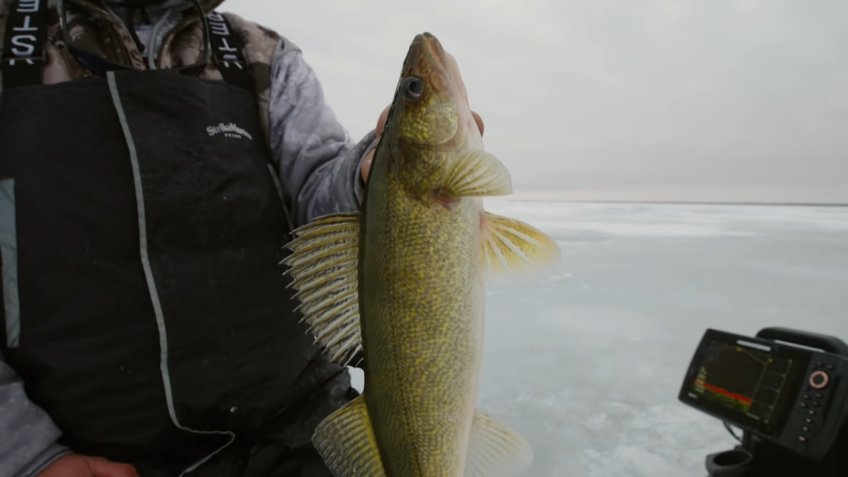
Mississippi is one of the few states with regulations in place specifically for ice fishing. Anglers must abide by all applicable state laws and regulations in addition to other local laws and ordinances. It is important to know that the specific regulations may vary from lake to lake and species to species so be sure to familiarize yourself with the relevant regulations before you head out on the ice.
The Mississippi Conservation Commission regulates all fishing in Mississippi, including any fish species caught through ice fishing, as well as any required licenses or permit fees. Generally, a Mississippi resident over 16 years old must purchase a license, although certain exceptions may apply to elderly or disabled people. Each area may also have its own local rules and bag limits that you need to comply with.
In addition, it’s important to understand the size limit and possession limit set forth by the state – each angler can keep no more than 6 panfish at one time on any given day and they cannot be less than 5″ in length (except in some areas where specially leveled lakes allow fishing without size restrictions). Anglers should remember not to exceed these limits – anyone who does have their equipment taken away by officials faces hefty fines.
It’s your responsibility as an angler to know all the regulations that govern your chosen body of water before you go out on the ice, so make sure you read up before starting your adventure!
Local regulations
Fishing and trapping in the Mississippi River must obey both state and local regulations. It is important to check with the appropriate authorities before embarking on a day of ice fishing in order to stay within the legal limits.
Local regulations will vary from one area of the Mississippi River to another, so again, it is important to check with the local authorities prior to any trip. Commonly encountered regulations include bait restrictions (for example, only certain types of minnows or worms are allowed for bait), daily creel limits, size restrictions on game fish species (length or weight), and allowable numbers of lines or traps. Some locations also have additional closure dates or restrictions related to spawning seasons that must be observed.
It is also important to note that many bodies of water are subject to special regulations enacted by Tribal Governments; be sure to obtain all necessary permits or licenses before fishing in these areas.
FAQs
What are some popular ice-fishing techniques on the Mississippi River?
Popular techniques include jigging, tip-ups, and dead sticking.
Do I need a fishing license to ice fish on the Mississippi River?
Yes, a valid fishing license is required to ice fish on the Mississippi River. Check local regulations for specific licensing requirements.
What safety precautions should I take while ice fishing on the Mississippi River?
Always check ice conditions before venturing out and never fish alone. Wear appropriate safety equipment, such as a life vest, and carry ice picks in case of an emergency.
What should I do if I fall through the ice while ice fishing on the Mississippi River?
Stay calm, grab your ice picks, and try to climb out of the water using the edge of the ice. Seek medical attention immediately.
Are there any regulations on the number and size of fish that can be caught while ice fishing on the Mississippi River?
Yes, there are regulations on the number and size of fish that can be caught while ice fishing on the Mississippi River. Check local regulations for specifics.
What are some tips for catching fish while ice fishing on the Mississippi River?
Use the right bait and lures for the species you’re targeting and pay attention to water depth and temperature.
Conclusion
In conclusion, ice fishing on the Mississippi River offers a unique and exciting experience for anglers of all skill levels. With its abundance of fish species and a variety of fishing locations, the Mississippi River provides ample opportunities for catching fish during the winter months.
By following the tips and techniques outlined in this guide, ice fishing enthusiasts can make the most of their experience on the river. Remember to always prioritize safety, check local regulations, and be prepared with the right equipment and knowledge. With these considerations in mind, ice fishing on the Mississippi River can be a rewarding and memorable experience for all who venture out onto the ice.

